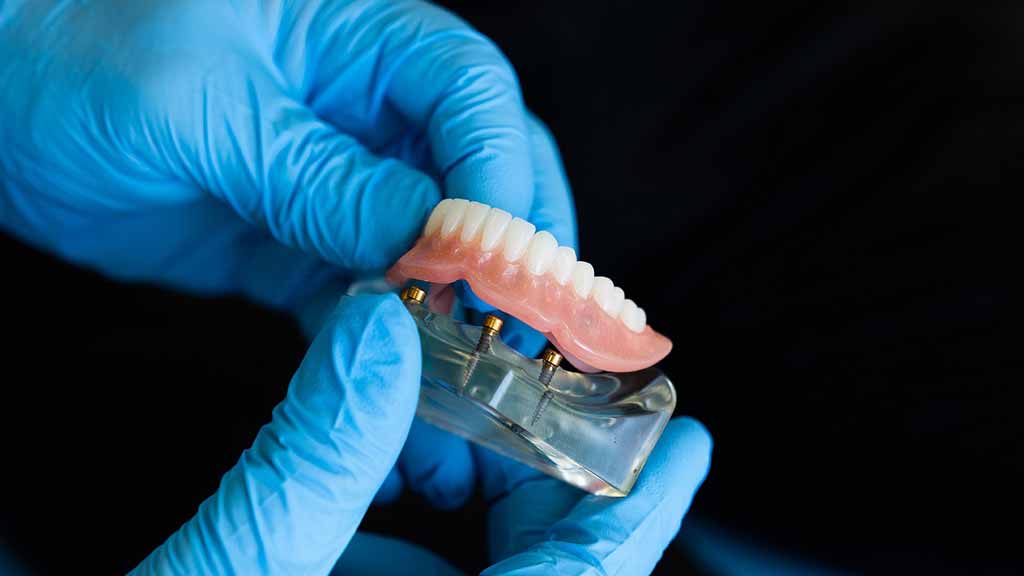Plastic fillings can be used economically and in a short time. However, they are more suitable for smaller defects, i.e. for fillings. Another disadvantage is that discoloration is possible, for example due to tea or coffee, and abrasion can also occur over time. In the 1960s, a milestone was reached
with the introduction of metal ceramics, i.e. a metal structure on which a ceramic coating is fired. Even today fixed prostheses, i.e. crowns and bridges, are made of metal-ceramics. However, the metal substructure blocks light, making it virtually impossible to perfectly mimic the natural tooth color.
Since the 1990s, all-ceramic restorations have been considered an alternative to metal-ceramic solutions. For a long time they were considered less stable. However, further development of materials has steadily increased the reliability of all-ceramic restorations. Zirconium oxide has been used to create a high-performance ceramic that is significantly more resistant to breakage and chewing than other all-ceramic solutions. Today, all-ceramic dental prostheses have a wide range of applications. The use of zirconium dioxide has also made it possible to offer patients highly esthetic, metal-free restorations for removable and implant-supported prostheses.
Metal-free ceramics are particularly convincing from an aesthetic point of view: where there is no metal structure underneath, it cannot show through. Because the typical brightness of the teeth is created by the hard, translucent tooth substance. Therefore, a tooth-colored replacement material must mimic not only the color but also this translucency to deceive the eye. Metal ceramics cannot mimic this effect. Ceramic materials, on the other hand, are translucent and can be colored in many different ways. They mimic the hard structure of teeth so perfectly that it is difficult to distinguish dentures from natural teeth. In addition, unlike metal crowns, the material cannot cause allergies, especially at the gum line.
The 1990s also saw a breakthrough in the way dental prostheses were fabricated. Since then, CAD/CAM technology has enabled the computer-aided design and production of artificial teeth. The tooth to be replaced can be designed on screen and manufactured on the milling machine based on this data. With this state-of-the-art technology, aesthetic and high-precision restoration shapes can be produced.
Today, experts generally consider all-ceramic zirconia solutions, manufactured with CAD/CAM technology, to be a better solution than metal-ceramics.
